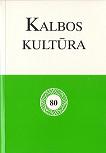Gabenimo veiksmažodžių semantika ir sinonimika
Semantics and synonymy of verbs of transportation
Author(s): Vitas LabutisSubject(s): Language and Literature Studies
Published by: Lietuvių Kalbos Institutas
Keywords: Verbs of transportation; relocation; transposition; valency
Summary/Abstract: In the main general dictionaries of Lithuanian as well as systemic, ideographic dictionaries and thesauri of Lithuanian, English or Russian, verbs of transportation are treated in a variety of ways. These verbs have features of transition and mobility (relocation, transposition). Their complex semantics and a broad range of valencies as well as other combinatory features equally apply to the whole semantic group. The concept of transportation can be defined as follows: “a semantic subject moving in a certain direction makes the semantic object move in the same direction”. The general meaning of transportation can be differentiated by prefixes and a couple of suffixes. The verbs of transportation can be presented in the following way starting with the most typical case: 1) semanteme: vežti > nešti > gabenti > vesti > vilkti > tempti...; 2) semanteme: kelti(s) > kraustyti(s) > gabenti(s). Verbs of transportation can be grouped according to the means of transportation, the surface of transportation, direction of movement etc. The general verb gabenti and less frequent verbs plukdyti, skraidinti, transportuoti have rather limited possibilities to increase their frequency of use or substitute other words.
Journal: Bendrinė kalba (iki 2014 metų – Kalbos kultūra)
- Issue Year: 2007
- Issue No: 80
- Page Range: 32-44
- Page Count: 13
- Language: Lithuanian

